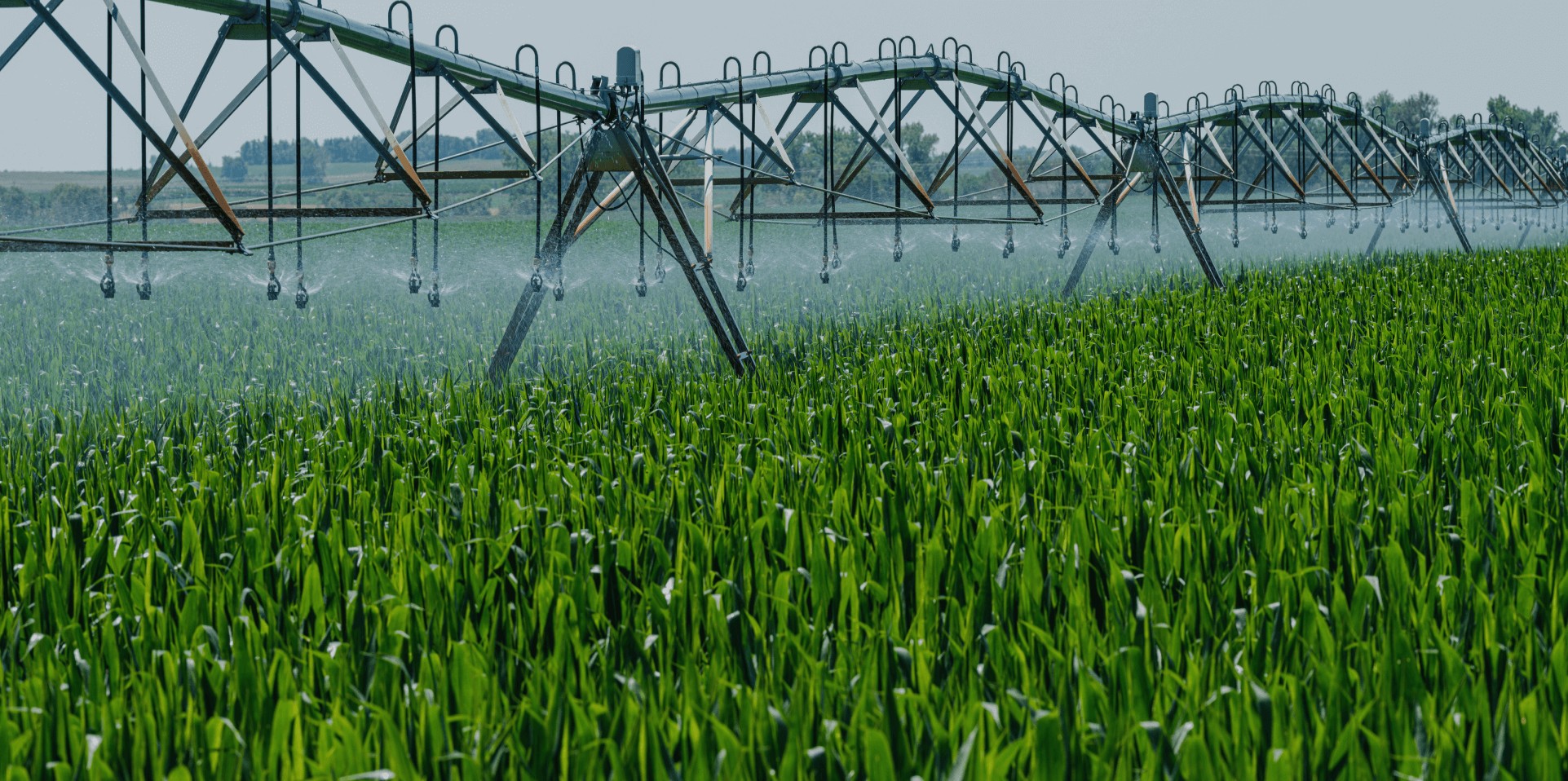
From scarcity to abundance: The quest for sustainable water in agriculture

Rahul Bhushan
15 years: Structured Products and Sustainability
Achieving sustainable water use in agriculture requires systemic changes, including effective policies, governance, education, and community engagement

Agriculture is a major consumer of global water resources, responsible for over 70% of water usage in many regions. This significant water footprint, especially in water-intensive sectors like beef production, highlights the urgent need for more efficient agricultural practices. Focusing on water conservation in agriculture is critical to addressing the growing issue of water scarcity.

The past century has seen water demand grow at twice the rate of the human population. Currently, water scarcity affects every continent, posing a significant threat to both agriculture and food security. A key study published in 2022 by Earth’s Future provides a fresh perspective on this challenge. The researchers developed an innovative index to assess and forecast water scarcity in agriculture, factoring in both soil water from rainfall (green water) and irrigation sources like rivers, lakes and groundwater (blue water). This groundbreaking study is the first of its kind to apply such a comprehensive index globally and to project the impact of climate change on both green and blue water scarcity.
Their findings are alarming: climate change could exacerbate agricultural water scarcity in up to 84% of the world’s croplands. About 60% of these areas could face water shortages primarily due to a reduction in available water supplies. This study underscores the critical nature of developing sustainable water management strategies in agriculture to combat the escalating challenges posed by climate change.

Source: International Water Management Institute, Aquastat (2014)
Innovations in agricultural water management technology
Technological innovations like precision agriculture and advanced irrigation systems stand out in the fight against water waste in agriculture. Precision agriculture, leveraging cutting-edge technologies like satellite imagery and IoT (Internet of Things) sensors, offers a promising avenue. Deere & Co, for instance, has pioneered precision agriculture equipment that allows for the better management of water resources, ensuring that crops receive exactly what they need, when they need it. A study by the American Society of Agricultural and Biological Engineers highlighted that precision agriculture techniques could reduce water usage by up to 30% while maintaining or even enhancing crop yields.
The use of big data analytics and artificial intelligence to predict and manage agricultural water usage can also be a crucial technology. AI algorithms can optimise irrigation schedules and quantities by processing data from various sources, including weather forecasts, soil moisture levels and crop growth stages.
As part of this, a transition to more efficient irrigation systems, in particular drip irrigation, could have remarkable potential in conservation. Lindsay Corp’s innovative irrigation solutions, for example, deliver water directly to plant roots, dramatically reducing evaporation and runoff losses. According to the Food and Agriculture Organisation, drip irrigation can increase water efficiency to over 90%, compared to traditional methods like flood irrigation, which are often less than 50% efficient. The cost-effectiveness of drip irrigation is increasingly recognised, with many governments offering subsidies and incentives to encourage its adoption, which has also been helping the cost curve improvements.

Integrated Water Resource Management (IWRM) stands at the intersection of water management and climate science. Climate science informs IWRM by predicting weather patterns and climate change impacts, allowing for more informed decisions on water use and crop planting cycles. Such a forward-looking perspective can be beneficial in developing resilient farming practices that are adaptive to changing weather and environmental conditions.
While technology revolutionises water usage from above, advancements in crop science are making equally significant strides from the ground up.
Advances in crop and soil sciences for water efficiency
Advances in crop science, led by companies like DSM-Firmenich and Novozymes, are at the forefront, are leading to the development of genetically edited crops that demand less water and exhibit greater drought resistance. While drought resistance has been the focus until recently, these companies are now developing crops that are modified to thrive in saline or otherwise non-arable soils, expanding the usable agricultural land base. These scientific achievements in plant biology not only help in reducing the agricultural water footprint but also bolster food security and availability in an increasingly unpredictable climate.
Soil science, too, plays a pivotal role. By enhancing soil’s inherent organic matter and structure, scientists are finding ways to increase, for example, the water-holding capacity of certain soils, which can significantly diminish the need for irrigation. Practices like no-till farming, cover crops and crop rotation are part of land-based agriculture, which maintains and improves soil health, reducing erosion and improving water retention.

The argument for abundance
As we confront the limitations of water in agriculture, a shift in focus from scarcity to potential abundance is worth thinking about. Desalination, enhanced by the work of companies like Eurofins Scientific in developing eco-friendly processes, stands as a beacon of hope for water abundance, particularly for arid regions and coastal communities. Technological advancements have significantly reduced the cost of desalination, making it a viable option for supplementing agricultural water needs. The key lies in harnessing renewable energy sources to power desalination plants; solar and wind energy are paving the way for eco-friendly and cost-effective desalination processes and the costs are significantly cheaper today than 10 years ago, even 5 years ago. With unlimited seawater as a resource, desalination has the potential to create a consistent and controlled supply of water, insulated from the variability of climate change.
Additionally, purifying and repurposing wastewater for irrigation not only mitigates the draw on freshwater but also enriches soil with nutrients from the treated water. The integration of such systems can transform waste into a valuable asset for agriculture.
Advances in energy efficiency are also instrumental in making water use in agriculture more sustainable. Energy-efficient pumping and conveyance systems minimise the carbon footprint of water distribution, while also reducing costs. The adoption of solar-powered irrigation can lead to an abundant water supply by leveraging the most plentiful energy source—the sun—for water extraction and irrigation.
Achieving water abundance demands a paradigm shift in how we manage and value this essential resource. Investments in infrastructure, research into new water sources and policies that support sustainable practices are all fundamental to turning the vision into a reality. A synergy of these approaches—desalination, wastewater reuse and energy-efficient technologies—heralds a future where water scarcity is not necessarily an inevitability.
However, technological potential can only be realised through systemic solutions that also align policy, governance and societal values.
Systemic solutions
Achieving sustainable water use in agriculture extends beyond technological advancements; it demands systemic solutions that encapsulate policy, governance and societal engagement. Effective water management policies must prioritise conservation and innovation, incentivising farmers through subsidies for adopting modern irrigation systems and recognising water-saving practices in regulatory frameworks. Governance, on the other hand, should ensure that these policies are implemented efficiently and adapted to local conditions, fostering collaborations between government entities, private sectors and farmers to create water-resilient communities.
In parallel, educational initiatives are essential for promoting understanding and adoption of sustainable practices. By integrating water management courses into agricultural education and providing ongoing training for farmers on the latest water-efficient technologies, we can empower the very people responsible for stewardship of the land to become agents of change. Community-based approaches ensure local engagement, with shared knowledge and resources fostering collective action towards reducing water footprints. Ultimately, the amalgamation of these efforts results in a cohesive and proactive strategy for water conservation, driving us towards a future where water scarcity is no longer a spectre looming over the next harvest.
These systemic solutions set the foundation for the concluding vision, where technological advances and strategic management converge to sustain and celebrate our water resources.
Conclusion
We have navigated through a spectrum of innovations and strategic approaches that offer a beacon of hope for sustainable agriculture. From precision agriculture and efficient irrigation systems that promise to fine-tune water usage, to genetic advancements fostering crops that can flourish in adversity, these solutions embody our adaptive ingenuity. Moreover, we’ve contemplated a paradigm shift towards water abundance, considering the potential of desalination and wastewater reuse bolstered by renewable energy, signifying a move from reactive conservation to proactive resource expansion. However, the success of these technical advancements will be limited without complementary systemic transformations. Effective policies and informed governance are crucial in setting the stage for sustainability, while education and community initiatives play pivotal roles in enacting lasting change. Our vision for a sustainable agricultural future, therefore, hinges on an integrated approach—melding technological prowess with a societal commitment to stewardship of our most precious resource: water.
Originally published in Rize ETF.

Rahul Bhushan
Share "From scarcity to abundance: The quest for sustainable water in agriculture" on
Latest Insights

Natural capital: The strategic risk still missing from business planning
14th August 2025 • Maria Coronado Robles

From mandate to momentum: Regulation as a force for positive change
1st August 2025 • Maria Coronado Robles

Understanding the UK PRA's newest climate risk management expectations
25th July 2025 • David Carlin

Are knowledge gaps or disparities blocking your sustainability success?
26th June 2025 • Maria Coronado Robles





























